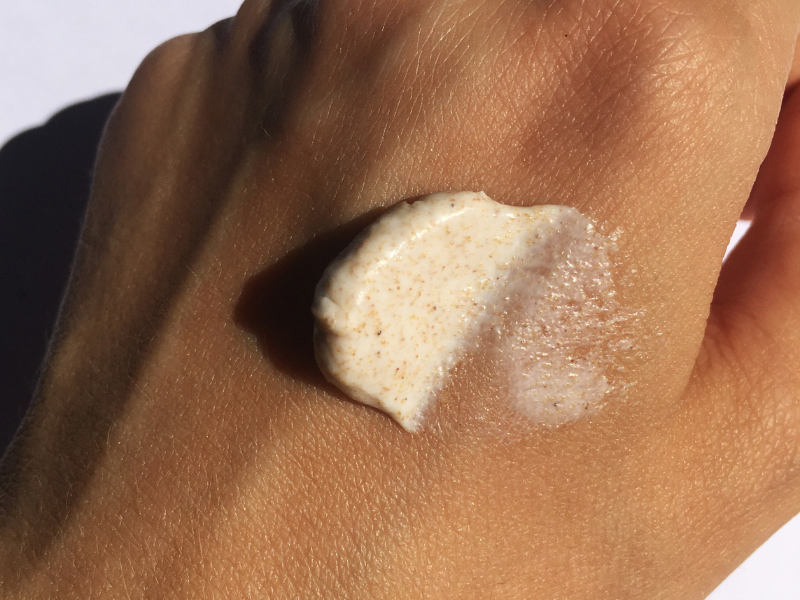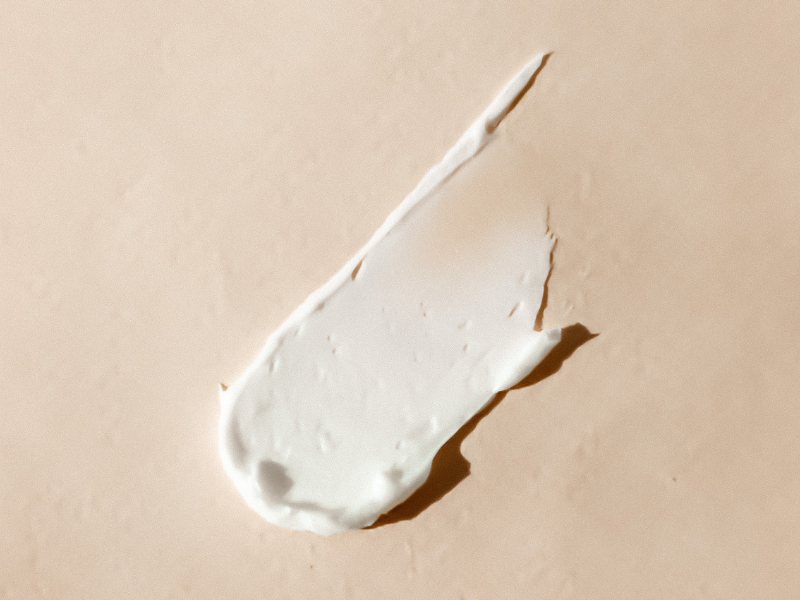Although there are more and more natural cosmetics on the market, we find terms in the description of products that are foreign to us, have long names or are impossible to pronounce. There are ingredients in cosmetics that we use regularly and they are very harmful to our health. Even the mere pronunciation of the word indicates that it has a poor chemical composition.
Harmful ingredients in cosmetics are toxic. Almost every product is declared to be natural, but it can be a lie. If we see that there is a picture of a healthy food on the product and it is green, it does not necessarily mean that the product is natural. We conclude how important it is to read the composition of the product and familiarize yourself with its ingredients. Sometimes we don't have time, maybe we're not educated enough, but that shouldn't be an excuse for us to know what we're putting on our skin. Chemical ingredients in products are linked to tumors, hormonal imbalance and go directly into the bloodstream. We list some of the ingredients that should definitely be avoided.

1. Parabens
Parabens are chemicals that serve as cosmetics preservative. Therefore, the product lasts for months and even years. The purpose of parabens is to protect the product from bacteria. The problem is that it can be absorbed through the skin into the bloodstream and it can cause breast cancer and testicular cancer. They mimic estrogen in the body and thus a hormonal imbalance occurs. In addition, they are harmful to the environment.
Adverse health effects are:
- reproductive complications
- skin irritation
- damage to the brain and nervous system
- tumors
- hormonal disorder
Parabens are found in every product, from soap to makeup products. We will list some to make it easier for you and give a clearer picture of this harmful ingredient.
It's situated in: shampoos, conditioners, soaps, body lotions, shower products, creams.
Labels on product packaging: everything ending in -paraben (benzylparaben, butylparaben, propylparaben, methylparaben, ethylparaben, isobutylparaben).
2. Phthalates
Phthalates are chemicals that are plasticizers, in addition to cosmetics are found in various other products. And that includes toys, laundry products, lubricating oils, food packaging. In cosmetics we can find them in hair sprays, nail polishes, perfumes. In nail polishes it is used to prevent the varnish from cracking, while in hair sprays it is used to prevent the hair from being too stiff or stiff. In perfumes it is used as a solvent and fixative to keep the perfume on the skin. Phthalates are endocrine disruptors and can cause hormonal and reproductive problems and birth defects. They are dangerous for pregnant women, ie fetal development.
Three are widely used in cosmetic products: dibutyl phthalate (DBP), diethyl phthalate (DEP) and Di-2-ethylhexylphthalate (DEHP).
DPB is also found in nail products, DEP in scented products, and DEHP in eyelash glue. Phthalates can only be listed as an ‘odor’ so you may not even know the product contains this ingredient.
EU regulation has banned DBP and DEHP in cosmetics sold in European Union countries.
Adverse health effects are:
- hormonal disorders
- fetal development during pregnancy
- reduced fertility
- tumors
It's situated in: perfumes, nail polishes, hair sprays, lipsticks, body lotions that contain fragrances, shower products.
Labels on the packaging: phthalate, DEP, DBP, DEHP, fragrance.
3. Triclosan
It's triclosan antibacterial ingredient which is found in soaps and laundry products, and is also allowed in leather products. Apart from its health, it is also harmful to the environment. In cosmetics, it fights unpleasant odors, slows down and stops the growth of bacteria and helps extend the life of the product.
Adverse health effects are:
- hormonal disorders
- decrease in the function of the immune system
- impaired muscle function
- tumor development
It's situated in: toothpastes, deodorants, antibacterial soaps, shampoos, creams.
Labels on the packaging: Triclosan (TSC), triclocarban (TCC).
4. Sodium lauryl sulphate (SLS) and sodium laureth sulphate (SLES)
SLS i SLES su surfactant, a used as foaming and cleansing agents for the skin. These compounds, in combination with water, can be used to dissolve oil or fat, that's why they are found in products for facial cleansing. Because surfactants reduce surface tension, foam is formed. The chemical composition is considered carcinogenic.
Harm to health:
- allergies
- skin irritation
- disturbance of the natural balance of the skin
- irritates the eyes
- causes acne
- is associated with tumors and hormonal imbalance
- neurotoxic
They are located in: shampoos, facial cleansers, shower products, baby baths, toothpastes, soaps.
Product labels: sodium laureth sulfate, sodium lauryl sulfate, sodium lauryl ether sulfate, anhydrous sodium lauryl sulfate and irium.
5. Petrolatum
Petrolatum is one of petroleum products which is a common ingredient in cosmetic products. It is used as a moisturizer. They are often contaminated with cancer-causing impurities. The European Union classifies petrolatum in cosmetics as carcinogenic.
Hidden behind the name:
vaseline
xylene
toluene (benzene, phenylmethane, methylbenzene)
mineral oil
liquid paraffin.
Harm to health:
- tumors
- skin irritation
- acne
- destroys the immune system
- slows down skin function and normal cell development
They are located in: creams, lotions, nail polishes, make-up, balms, shampoos.
Labels on the packaging: etrolatum, vaseline, mineral oil, paraffin wax.
6. Butylated hydroxyanisole (BHA) and butylated hydroxytoluene (BHT)
Butylated hydroxyanisole (BHA) and butylated hydroxytoluene (BHT) are synthetic antioxidants based on petroleum products, which are used in cosmetics as a preservative. Apart from cosmetics, they are also widely used as a food preservative. The European Commission has classified BHA as a toxic substance. They are associated with many health problems.
Harm to health:
- hormonal disorder
- organ toxicity,
- underdevelopment of reproductive organs and their dysfunction
- skin irritation
- tumors
- damages cells
They are located in: lipsticks, eye showers, eye shadows, lip glosses, blushes, perfumes, powders, skin cleaning products, hair products, creams, deodorants.
Labels on the packaging: BHA, BHT.
7. Diethanolamine (DEA), monoethanolamine (MEA) and triethanolamine (TEA)
Ethanolamines on chemical groups consisting of amino acids and alcohol. Compounds used in cosmetics used as emulsifiers and as a foaming agent. They are widely used in cosmetics. European Commission bans diethanolamine (DEA) in cosmetics to reduce contamination with carcinogenic nitrosamines (substances that are also commonly found in cosmetics).
Harm to health:
- irritation of eyes and skin and respiratory system
- allergies and asthma
- inhibited fetal brain development
- toxicity of organs and nervous system
They are located in: most foaming personal care products, including baths, shower products, shampoos, soaps, facial cleansers, hair dyes, mascaras, powders, fragrances, sunscreens, shaving creams, eye shadows and blushes, and showers for the eyes.
Labels on the packaging: DEA or diethanolamine, TEA or triethanolamine, MEA or monoethanolamine cocamide ili oleamide DEA ili oleamid diethanolimine, ili oleamid DEA ili oleamid diethanolimine.
8. Formaldehyde
Formaldehyde is colorless, strongly fragrant full used in industry and construction products, furniture and cosmetics. The cosmetics industry uses a form of formaldehyde that is formed by releasing formaldehyde over time. It is used as an antibacterial preservative. This ingredient is banned in the EU.
Like formaldehyde, preservatives that release formaldehyde are also allergens and sensitizers. Formaldehyde releases are: imidazolidinyl urea
diazolidinil urea
bronopol
DMDM hidantoin
sodium hydroxymethylglycinate
5-Bromo-5-nitro-1,3-dioxane
last three-15
Harm to health:
- skin irritation and allergies
- tumors
It's situated in: nail polishes, nail glue, eyelash glue, hair gels, hair straightening products, baby shampoos, body soaps and shower gels, colored cosmetics, deodorants.
Labels on the packaging: Formaldehyde, formalin, urea, diazolidinyl urea, imidazolidine urea, polyoxymethylene urea, glyoxal, DMDM hydantoin, quaternium-15, 2-bromo-2-nitropropane-1,3-diol and sodium hydroxylmethylglycinate.
9. Polyethylene glycol (PEG compounds)
PEG compounds are oil-based mixed with fatty acids and fatty alcohols to create ingredients for a number of functions in cosmetics, from thickeners, emollients to stabilizers. They are often contaminated with ethylene oxide and 1,4-dioksanom, which are both carcinogens. They are also harmful to the environment and dangerous if inhaled in pure form. Using acrylamide is banned in cosmetics in the EU, and the EU also sets limits on the amount of acrylamide allowed in products containing polyacrylamide.
Harm to health:
- tumors
- toxic to organs and respiratory system
- Skin irritation
- weakened immune system

They are located in: moisturizing face creams, anti-aging products, color cosmetics, lotions, hair products, sunscreens, shampoos, shower gels, baths.
Labels on the packaging: polyacrylamide, acrylamide, polyacrylate, polyquaternium, acrylate.
10. Coal tar - coal tar (aminophenol, diaminobenzene, phenylenediamine)
It's coal tar by-product of coal processing that is, its incineration. It is a complex mixture of hundreds of compounds, many of which are polycyclic aromatic hydrocarbons (PAHs). PAHs are chemicals which are reasonably expected to cause tumors. National Toxicology Program i The International Agency for Research on Cancer considers it a carcinogen.
Harm to health:
- skin tumors
- neurological damage
- toxicity of organic systems (emotional disorders, sleep disorders, loss of coordination)
- Irritation
It's situated in: shampoos and scalp treatments, soaps, hair dyes, lotions, anti-dandruff products.
Labels on the packaging: coal tar solution, tar, coal, carbo-cort, USP coal tar solution, crude coal tar, ester, impervotar, KC 261, lavatar, picis carbonis, petroleum, high concentration petroleum, petroleum distillate, B70 petrol, petroleum petroleum.
Before you go shopping, we advise you to find out about the ingredients of the product, or google unknown ingredients during the purchase. To make it easier for you - an ingredient that has a very long name is usually the chemical composition of the product. We believe that it is important to you what you put on your skin, so we recommend natural products of organic origin.

